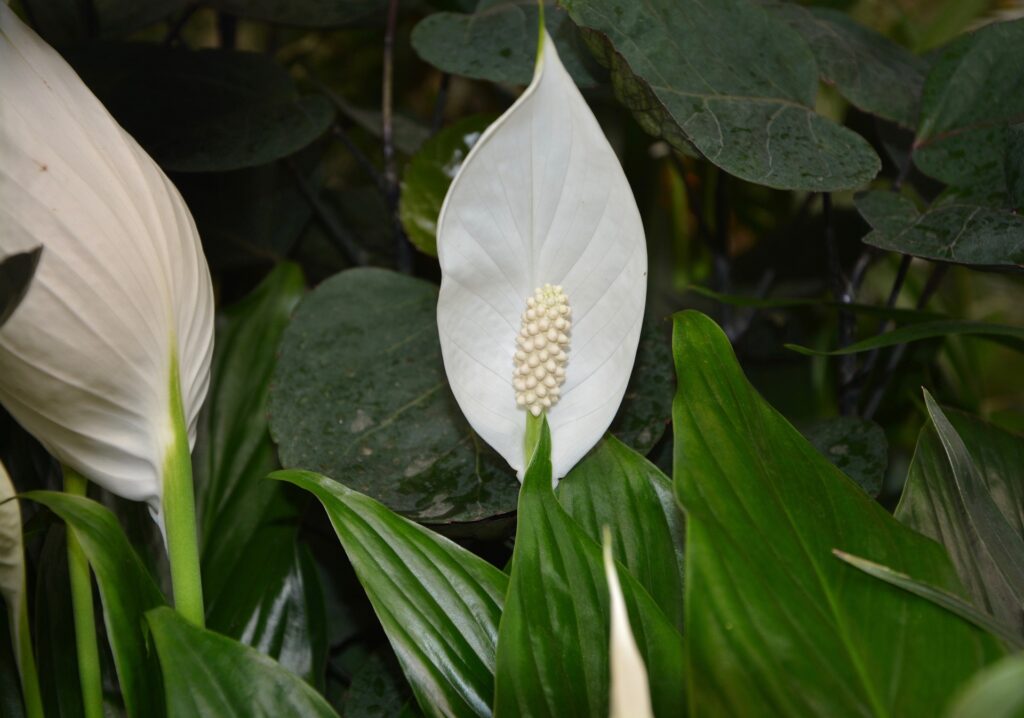Spathiphyllum: A Stylish and Low-Maintenance Addition to Your Garden
Spathiphyllum, commonly known as Peace Lily, is a popular choice for gardeners seeking a stylish and low-maintenance plant. Here’s a comprehensive guide on growing and caring for Spathiphyllum.

Types of Spathiphyllum
Spathiphyllum comes in various types, each with unique characteristics. Here are some common types:
| Type of Spathiphyllum | Characteristics |
|---|---|
| Mauna Loa | Large leaves, long-lasting white blooms, ideal for indoor containers. |
| Domino | Variegated foliage with white spots, moderate size, great for decorative pots. |
| Wallisii | Smaller size, narrower leaves, blooms frequently, perfect for tabletops. |
Growing Season
Spathiphyllum has different growth patterns based on its type and environment. Here’s a general seasonal guide:
| Season | Activity |
|---|---|
| Spring | Plant new Spathiphyllum, fertilize, start watering regularly. |
| Summer | Continue watering, provide indirect light, prune as needed. |
| Fall | Reduce watering, prepare for dormancy, propagate cuttings. |
| Winter | Minimal maintenance, protect from drafts, water sparingly. |
Sunlight and Water Needs
Spathiphyllum thrives in low to moderate light and needs consistent moisture. They prefer:
Sunlight: Indirect or filtered light; avoid direct sunlight to prevent leaf burn.
Watering: Keep soil consistently moist but not waterlogged. Water when the top inch of soil feels dry.
Soil Preferences
Spathiphyllum prefers well-drained, peat-based soil to promote healthy growth.
| Soil Type | pH Level | Characteristics |
|---|---|---|
| Peat-Based | 5.5-6.5 | Retains moisture, good drainage. |
| Potting Mix | 5.5-6.5 | Suitable for houseplants, contains perlite and peat moss. |
Fertilization and Nutrients
Spathiphyllum benefits from regular feeding during the growing season.
| Season | Fertilization Type |
|---|---|
| Spring | Balanced liquid fertilizer (half-strength) every 4-6 weeks. |
| Summer | Fertilize monthly with balanced fertilizer. |
| Fall | Reduce fertilization, preparing for dormancy. |
| Winter | No fertilization needed. |
Pruning and Maintenance
Regular maintenance helps keep Spathiphyllum healthy and attractive. Prune as needed to remove dead or damaged leaves and to maintain shape.
Additional Tips for Growing Spathiphyllum
- Container Choice: Use pots with drainage holes to prevent waterlogging.
- Propagation: Spathiphyllum can be propagated by division during repotting.
- Pest Control: Watch out for common pests like spider mites and aphids. Use insecticidal soap or neem oil as necessary.
- Humidity: Spathiphyllum thrives in high humidity environments. Mist the leaves regularly or use a humidifier.
Conclusion
Spathiphyllum is a stylish and low-maintenance addition to any garden or indoor space, offering lush foliage and elegant white blooms with minimal care. By selecting the right type of Spathiphyllum and providing proper sunlight, water, and soil conditions, you can enjoy these beautiful plants for years to come.